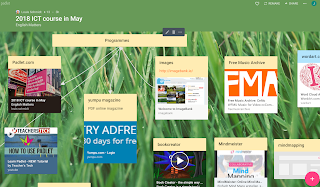On the side:
What would it take for someone to cross the bridge into your heart? Draw the bridge and come up with a password. You can also write down instructions (trainer shows a model).
Alternative:
Students listen to a song (e.g. I just called to say I love you: vocabulary seasons, months, days).
After a while add:
Check and discuss aspects of active listening (verbal and non-verbal clues) in whole group.
Make group aware of intercultural differences, e.g. in turn-taking
WORKSHOP: LISTENING AND CREATING RAPPORT
The rationale: listening is a complex skill that not only requires knowledge and strategies, but rapport between the listener and the text/speaker
Lead-in activity
Awareness
The Chinese sign for 'listening' shows how listening is not just a minor skill.We filter what we hear
Game: Chinese Whispers -> Listeners construct meaning according to their own language skills and knowledge. Same goes for our learners. Especially important for instructions!Activity: Selective Listening
Students get one word from a simple story. The story is read out by teacher. Whenever they hear 'their' word, they stand up.Alternative:
Students listen to a song (e.g. I just called to say I love you: vocabulary seasons, months, days).
Activity: Following instructions and bonding
One student is a lighthouse, another one the captain of a ship. The classroom is the ocean, the students spread out and create obstacles. The task: the lighthouse operator has to instruct the captain (who is blindfolded) how to reach the harbour (avoiding to crash into the obstacles).Awareness: Wordcloud Listening
Source: Kaltenbacher
Activity: Intonation
Blackboard:MmmmTask: Work in pairs. Create a conversation using only these words.
Yes
No
You
Me
After a while add:
I don't knowDiscuss importance of intonation and body language for successful communication.
When?
Activity: Active Listening
Learners work in pairs.a) Both partners give 1'-talks AT THE SAME TIMEHave trainees/class write down what makes a good listener.
b) Partner A gives a 2'talk to partner B. B is a statue and shows NO reaction
c) Partner B gives a 2'talk to partner A. A fidgets and shows lots of signs of being distracted
Check and discuss aspects of active listening (verbal and non-verbal clues) in whole group.
Make group aware of intercultural differences, e.g. in turn-taking
Source: lecture notes Kaltenbacher
Reflection Activity
Trainer reads out metaphorical story: the Wise Woman and the Hats
Source: Jane Revell and Susan Norman, In Your Hands, 1997, p.25
Group discuss meaning of the story, followed by individual mapping activity.








Kommentare
Kommentar veröffentlichen